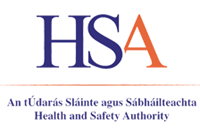Lessons Learned / Best Practices in health and safety in construction
Introduction
How many times have we heard, or even stated the following: “let that be a lesson to you”?
We all need to learn from past mistakes to prevent a repeat event or undesirable consequence. Accidents and near misses are preventable but only if we first understand how and why they happen and take corrective actions.
It is for this reason that the CIF has developed this portal for the sharing of both Lessons Learned / Best Practices in health and safety in construction, as well as additional safety resources.
Overview
Objectives
Routine inspections and incident investigations may identify unsafe working practices, which can facilitate learning from operational experience (i.e. lessons learned). The consequence of sharing of lessons learned across the wider construction industry would be fewer accidents, enhanced moral and increased productivity.
How to share your Lesson Learned / Best Practice in health and safety
There are two options for sharing a lessons learned/best case example:
- Complete the entry fields provided at submit lessons learned page, or
- Complete the Word Template provided and email John Egan at: [email protected].
Best Practice / Lessons Learned should draw on both negative experiences and positive outcomes; for example, good ideas that improved health, safety and welfare onsite, and work tasks that would be done differently, if repeated.
Material uploaded onto the CIF webpage must be controlled. For this reason, the CIF Safety and Training department act as a review panel to confirm that no content is uploaded that could conflict with the General Data Protection Regulations (GDPR), cause damage to a company’s reputation or create liability for a claim. Nonetheless, all contributors must take personal accountability for content provided.
Terms and conditions
- Portal is not to be used to document a fatality or an event under investigation by the HSA or other regulatory body;
- With exception of the optional field: “for further information”, avoid reference to an individual, client or company’s name, address, phone number or email;
- Avoid inclusion of personal data or material that may be subject to litigation, claim or investigation, or which may result in reputational damage for an individual, company, service provider or client.
Additional resources
Uisce Éireann’s safety videos

Uisce Éireann publicises close calls on site, and good catches which prevented incidents.
See: Safety Videos | Uisce Eireann and Close Calls | Safety Videos | Contractor Portal.
HSA safety alerts 2025

The Health and Safety Authority (HSA) provides safety alerts on a range of topics for workers to be aware of. See the safety alerts for 2025 here.
